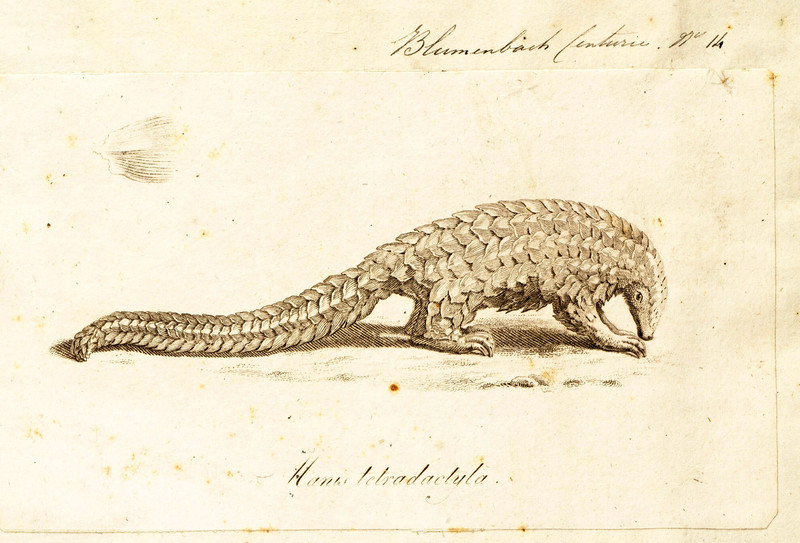Manis longicaudata = Phataginus tetradactyla (long-tailed pangolin) (cropped) Manis longicaudata
Date between 1700 and 1880
Notes This object is part of the collection Iconographia Zoologica
Source/Photographer Iconographia Zoologica
Old Latin name Manis longicaudata
New Latin name Manis tetradactyla longicaudata
Common name Nederlands: Langstaartschubdier
Source: cropped from https://commons.wikimedia.org/wiki/File:Manis_longicaudata_-_1700-1880_-_Print_-_Iconographia_Zoologica_-_Special_Collections_University_of_Amsterdam_-_UBA01_IZ21000007.tif
The long-tailed pangolin, African black-bellied pangolin, or ipi (Phataginus tetradactyla) is a diurnal, arboreal pangolin species that belongs to the family Manidae. They are native to parts of western and central Africa, including the Congo Basin and Guinean forests. Long-tailed pangolins feed on ants rather than termites. They have a characteristic very long tail, reaching a length around 60–70 cm. The body can reach a length of 30–40 cm and weigh 2.0–2.5 kg. The long-tailed pangolin is covered with 9 to 13 rows of overlapping, artichoke leaf-shaped keratinous scales. The scales are dark brown color with a brighter rim, which serves as camouflage.
Order: Pholidota
Family: Manidae
Genus: Phataginus
Species: Phataginus tetradactyla Linnaeus, 1766
Synonyms
- Manis tetradactyla Linnaeus, 1766
- Uromanis tetradactyla (Linnaeus, 1766)
- Manis africana Desmarest, 1822
- Manis ceonyx Rafinesque, 1820
- Manis hessi Noack, 1889
